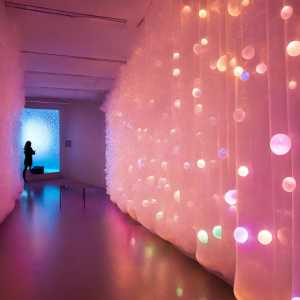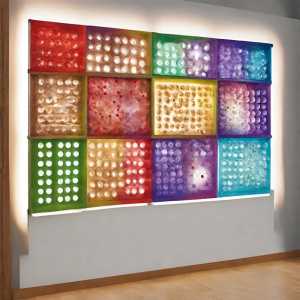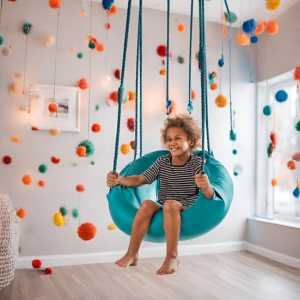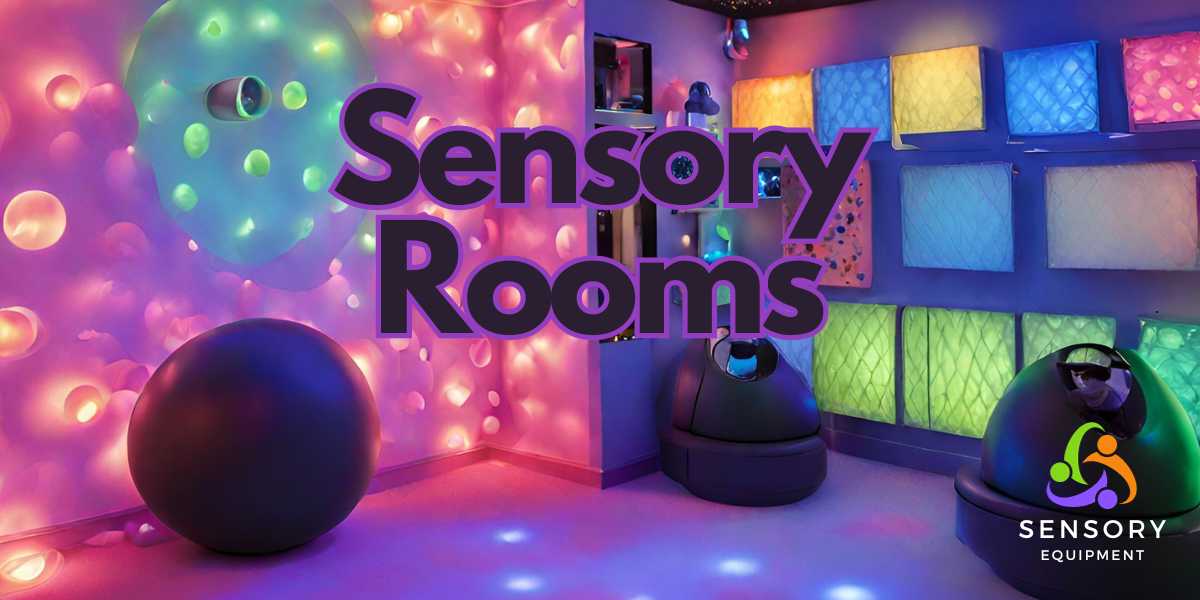Creating a sensory room for individuals with complex needs can provide a therapeutic and calming environment. Here are 10 items that work well in a sensory room, along with their associated benefits:
Soft Play Area:
Benefits: Soft, cushioned surfaces provide a safe and comfortable space for relaxation and exploration. They can also support gross motor skills and physical comfort.
Bubble Tube:
Benefits: The slowly rising bubbles and changing colours in a bubble tube can captivate attention, promote visual tracking, and create a soothing atmosphere.
Fibre Optic Lights:
Benefits: Fibre optic lights provide visual stimulation and can encourage focus and engagement. They’re also safe to touch, making them suitable for all ages.
Sensory Wall Panels:
Benefits: Wall panels with different textures, shapes, and manipulative offer tactile and fine motor sensory experiences, helping with exploration and sensory integration.
Sensory Swing:
Benefits: Swinging can have a calming and organising effect on the sensory system. It also provides proprioceptive input, which can help regulate emotions.
Aromatherapy Diffuser:
Benefits: Aromatherapy can be used to introduce calming scents like lavender or energising scents like citrus, promoting relaxation and sensory exploration through smell.
Projector with Rotating Patterns:
Benefits: Projectors with moving patterns or images can provide a visually stimulating and engaging experience, improving focus and visual tracking skills.
Weighted Blankets and Vests:
Benefits: Weighted items can provide deep touch pressure, which can be comforting and help with sensory regulation and anxiety reduction.
Sound Machine or White Noise Generator:
Benefits: Playing calming sounds or white noise can create a soothing auditory environment, reducing anxiety and promoting relaxation.
Tactile Sensory Objects:
Benefits: These can include objects with different textures, temperatures, and shapes to provide tactile stimulation and encourage exploration and sensory integration.



The benefits of a sensory room for individuals with complex needs include:
- Sensory Integration: Sensory rooms can help individuals process sensory information more effectively, improving their ability to cope with sensory challenges.
- Emotional Regulation: These spaces can provide a safe environment for self-regulation and emotional release.
- Reducing Anxiety: The calming and familiar surroundings of a sensory room can reduce anxiety and stress.
- Improved Focus: Many sensory room elements can help individuals develop and maintain focus and attention.
- Physical and Motor Skills Development: Sensory rooms can support the development of gross and fine motor skills.
- Communication and Interaction: They can be used to encourage communication and interaction, particularly for those who have communication challenges.
- Behaviour Management: Sensory rooms can be used as a proactive strategy for managing challenging behaviours.
When designing a sensory room, it’s essential to tailor the items and activities to the individual’s specific sensory needs and preferences, ensuring that the environment is safe and comfortable.





